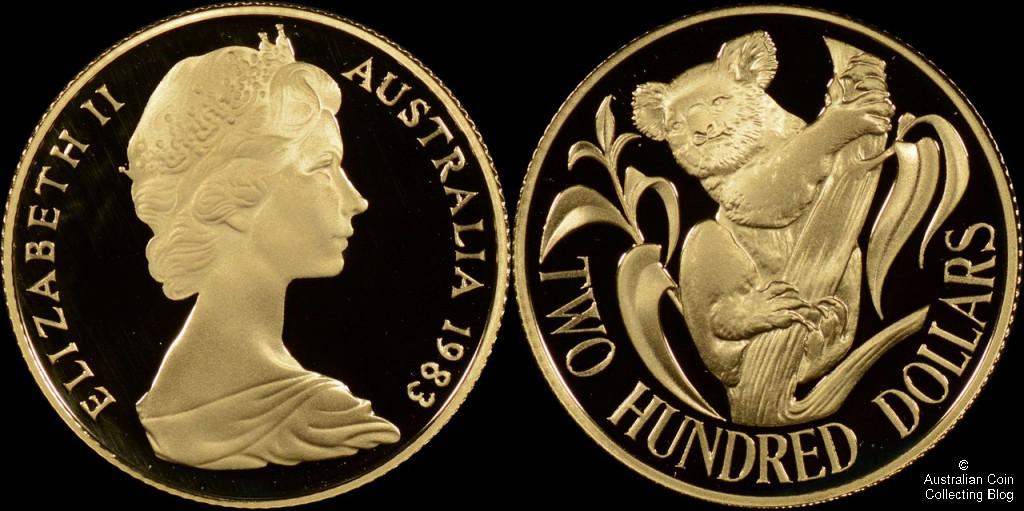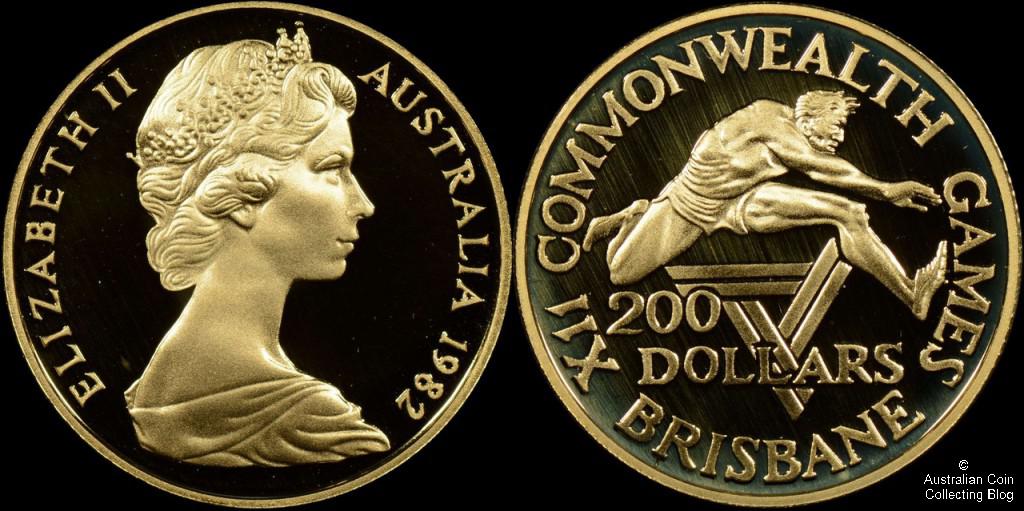In 1980 the Royal Australian Mint (RAM) released what was to be the first Australian 200 dollar coin. Minted from 22 carat (91.67%) gold and weighing 10 grams each coin contained 0.2947 of an ounce of pure gold. In 1980 the coin was released with the portrait of Queen Elizabeth on the obverse and the image of a koala sitting in a tree sculpted by Stuart Devlin on the reverse. Coins were released in uncirculated and proof finish and the issue price was $240 for the UNC coin while the proof coin would have set you back $295. The Mint continued to make the koala gold $200 coins each year until 1986, but in 1985 the portrait of the Queen changed from the work of Arnold Machin to that of Raphael Maklouf. Issue prices of the coins varied slightly from year to year based on the current bullion prices.
Given the excellent sales of the 1980 koala 200 gold coin (257,507 minted) the RAM thought it was onto a good thing and followed it up immediately in 1981 with another design, this time commemorating the royal wedding of Charles and Diana. Again, this coin was released in proof and uncirculated finishes, available for $240 each and there ended up being around 160,000 of the Charles and Diana 200 dollar gold coins minted. 1982 came, and along with it another excuse for the RAM to mint another commemorative 200 dollar gold coin, this time celebrating the Brisbane Commonwealth Games. This coin was $210 in uncirculated finish (77,206 mintage) and for some reason a lot more expensive in proof at $350 (30,032 mintage).
The Commonwealth Games $200 coin was the last new design until 1987, when Australia’s bicentenary (1988) was approaching. The 1987 $200 gold coin design still bore the Maklouf portrait of the Queen, while the reverse showed a portrait of Arthur Phillip and commemorated the 200th anniversary of the departure of the first fleet from Britain to Australia. Mintage of this coin was considerably less than the previous designs, with just a bit more than 40,000 of the proof and uncirculated finish coins minted. Of course, in 1988 another coin was released recognising the 200th anniversary of the arrival of the first fleet in Australia at Sydney Cove, 11,000 of these were minted in uncirculated condition and 20,000 in proof. The 1988 design was the last commemorative 200 dollar gold coin design released, and in 1989 the RAM changed tack completely with the designs.
The 1989 coin showed a frilled neck lizard, and perhaps as a marketing exercise was successful in reviving interest in the gold coin series as the mintage went back up to just over 40,000 in total for the proof and uncirculated coins. The RAM settled on an issue price of $242 for the uncirculated coin and $298 for the proof coin, prices it kept until the 200 dollar coins ceased production in 1994. 1990 through to 1994 saw a succession of wildlife themed reverse designs for the coins, with 1990 seeing a platypus, 1991 an emu, 1992 an echidna, 1993 a squirrel glider (the same animal seen on Australian 1 cent coins) and finally in 1994, a Tasmanian devil. Mintages dwindled each year as interest in the series declined and in 1993 and 1994 not even 10,000 of the proof and UNC coins were minted.
So, that’s the background to the Australian 200 dollar coins series, let’s get onto what they are worth today. Well, unfortunately NONE of the coins hold any collector value at all above the gold value that they contain. That’s right, it doesn’t matter what year, what design, or whether it’s a proof or uncirculated coin, the value is determined ENTIRELY by the gold bullion value. So, the 10 grams of 22 carat gold each coin contains comprises ALL the value of the coins. So, what’s the gold value of a 200 dollar coin today? Well we can tell you right now as you read this article, that an Australian $200 dollar gold coin is worth AU$0.00 (US$0.00). That value is determined from the current gold price on Currency Layer and is updated every 10 minutes or so. Typically if you want to sell your coin to a coin dealer you might get slightly under this value. If you take the do it yourself path and sell your coin on eBay you might get a bit more than this value BUT you’ll have to pay eBay their fee which could be anywhere from 5% to 10% of the final sale price.



